


DIISODECYL PHTHALATE (DIDP) (alternate CASRN is 68515-49-1)
¿Cómo puede este químico afectar a mi salud?
Efectos agudos (a corto plazo)Fuentes de documentación


Fuentes de documentación
[68515-49-1] Diisodecyl Phthalate (didp) (primary Casrn Is 26761-40-0) » Irrita la piel
Estas fuentes de documentación se refieren a un grupo de compuestos que contienen esta sustancia química:
- H315 - Causes skin irritation (unverified) [Skin corrosion/irritation - Category 2]EU - Manufacturer REACH hazard submissionsEuropean Union / European Commission (EU EC)
[68515-49-1] Diisodecyl Phthalate (didp) (primary Casrn Is 26761-40-0) » Irrita los ojos
Estas fuentes de documentación se refieren a un grupo de compuestos que contienen esta sustancia química:
- H319 - Causes serious eye irritation (unverified) [Serious eye damage/eye irritation - Category 2A]EU - Manufacturer REACH hazard submissionsEuropean Union / European Commission (EU EC)
Efectos crónicos (a largo plazo)Fuentes de documentación





Fuentes de documentación
Peligro Directo » Defectos congénitos
Estas fuentes de documentación se refieren directamente a esta sustancia química:
- Developmental toxicityCA EPA - Prop 65California Environmental Protection Agency (CA EPA)
- Clear Evidence of Adverse Effects - Developmental ToxicityUS NIH - Reproductive & Developmental MonographsUS Department of Health & Human Services - National Institutes of Health (US NIH)
- Developmental toxicity - TSCA Criteria metUS EPA - PPT Chemical Action PlansUS Environmental Protection Agency (US EPA)
Peligro Directo » Alteración endocrina
Estas fuentes de documentación se refieren directamente a esta sustancia química:
- Category 2 - In vitro evidence of biological activity related to Endocrine DisruptionEU - Priority Endocrine DisruptorsEuropean Union / European Commission (EU EC)
- Endocrine DisruptionChemSec - SIN ListChemSec, The International Chemical Secretariat
- Potential Endocrine DisruptorTEDX - Potential Endocrine DisruptorsThe Endocrine Disruption Exchange (TEDX)
- UNEP EDCsUNEP EDCsUnited Nations Environment Programme (UNEP)
Peligro Directo » Daños reproductivos
Estas fuentes de documentación se refieren directamente a esta sustancia química:
- Some Evidence of no Adverse Effects - Reproductive ToxicityUS NIH - Reproductive & Developmental MonographsUS Department of Health & Human Services - National Institutes of Health (US NIH)
- Reproductive effectsUS EPA - PPT Chemical Action PlansUS Environmental Protection Agency (US EPA)
- H361 - Suspected of damaging fertility or the unborn child [Toxic to reproduction - Category 2]GHS - JapanGovernment of Japan
- Repr. 2; H361 - Suspected of damaging fertility or the unborn child (modeled)DK-EPA - Danish Advisory ListDanish Environmental Protection Agency (DK-EPA)
Peligro Directo » Cáncer
Estas fuentes de documentación se refieren directamente a esta sustancia química:
- Carcinogen Group 3B - Evidence of carcinogenic effects but not sufficient for classificationMAKMAK Commission of Germany (Deutsche Forschungsgemeinschaft)
Phthalates (orthophthalates) » Provoca asma
Estas fuentes de documentación se refieren a un grupo de compuestos que contienen esta sustancia química:
- Asthma - allergen, sensitizer - limited evidenceCHE - Toxicant DatabaseCollaborative on Health and the Environment (CHE)
- Asthma - irritant - limited evidenceCHE - Toxicant DatabaseCollaborative on Health and the Environment (CHE)
- Rhinitis – allergic - limited evidenceCHE - Toxicant DatabaseCollaborative on Health and the Environment (CHE)
Peligros inherentesFuentes de documentación

Fuentes de documentación
Peligro Directo » Lista restrictiva
Estas fuentes de documentación se refieren directamente a esta sustancia química:
- EPA Chemical of Concern - Action Plan publishedUS EPA - PPT Chemical Action PlansUS Environmental Protection Agency (US EPA)
- TSCA Work Plan chemical - Action Plan in developmentUS EPA - PPT Chemical Action PlansUS Environmental Protection Agency (US EPA)
- Precautionary list of substances recommended for avoidanceP&W - Precautionary ListPerkins+Will (P+W)
- TSCA Work Plan chemical - ongoing chemical (risk) assessmentUS EPA - PPT Chemical Action PlansUS Environmental Protection Agency (US EPA)
- Chemicals of high concernSCHF - Hazardous 100Safer Chemicals, Healthy Families (SCHF)
- Priority Asthmagen to AvoidHabitable - Priority AsthmagensHabitable (formerly HBN)
- Candidate Chemical ListCA SCP - Candidate ChemicalsCalifornia Department of Toxic Substance Control (CA DTSC)
- Red List substances to avoid in Living Building Challenge V3 projectsLiving Building Challenge 3.0 - Red List of Materials & Chemicals (retiring December 31, 2024)International Living Future Institute (ILFI)
- Substances selected for RMOA or hazard assessmentEU - PACT-RMOA SubstancesEuropean Union / European Commission (EU EC)
- V3 2014 Substance of Concern ListBIFMA - e3/level Annex B list of chemicalsBusiness and Institutional Furniture Manufacturers Association (BIFMA)
- Bisphenols and PhthalatesGSPI - Six Classes Precautionary ListGreen Science Policy Institute (GSPI)
- Some SolventsGSPI - Six Classes Precautionary ListGreen Science Policy Institute (GSPI)
- Substances restricted under REACHEU - REACH Annex XVII non-CMRsEuropean Union / European Commission (EU EC)
- Chemicals of High ConcernMDH - Chemicals of High Concern and Priority ChemicalsMinnesota Department of Public Health
- Chemicals of High Concern to ChildrenWA DoE - Chemicals of High Concern to ChildrenWashington State Department of Ecology (WA DOE)
- Designated ChemicalCA DTSC - Biomonitoring California Chemical ListCalifornia Department of Toxic Substance Control (CA DTSC)
- CoHC List (non SVHC)CPA - Chemical FootprintClean Production Action (CPA)
- Children's ProductsC2C Certified v4 Product Standard Restricted Substances List (RSL) - Effective July 1, 2022Cradle to Cradle Products Innovation Institute (C2CPII)
- ZDHC - MRSL v1.1 for Textiles and Synthetic Leather ProcessingZDHC - MRSL v1.1Zero Discharge of Hazardous Waste Chemicals Programme
- ZDHC - MRSL v1.1 for Natural Leather ProcessingZDHC - MRSL v1.1Zero Discharge of Hazardous Waste Chemicals Programme
- Red List substances to avoid in Living Building Challenge V3.1 projectsLiving Building Challenge 3.1 - Red List of Materials & Chemicals (retiring December 31, 2024)International Living Future Institute (ILFI)
- Red List substances to avoid in Living Building Challenge V4.0 projectsLiving Building Challenge 4.0 - Red List of Materials & Chemicals - Effective April 1, 2024International Living Future Institute (ILFI)
- 2019 Substance of Concern ListBIFMA - e3/level Annex B list of chemicalsBusiness and Institutional Furniture Manufacturers Association (BIFMA)
- Tier 1 “Do Not Use Chemicals” for EveryoneCampaign for Safe Cosmetics’ Red List of Chemicals of ConcernCampaign for Safe Cosmetics
- Declarable and Reference Substance Lists (DSL and RSL)IEC 62474 - Material Declaration for Products of and for the Electrotechnical IndustryInternational Electrotechnical Commission
- Chemicals of High Concern to ChildrenVermont Chemicals of High Concern to ChildrenVermont Environmental Health Division
- Food Contact Chemicals Database Version 5.0Food Contact Chemicals Database (FCCdb)Food Packaging Forum
- Food Contact Chemicals of Concern List (FCCoCL) - TIER 1Food Contact Chemicals of Concern (FCCoCL)Food Packaging Forum
- PhthalatesAmerican Apparel and Footwear Association Restricted Substance List (AAFA RSL)American Apparel and Footwear Association
- Target Priority Chemicals List (TPCL)Target Corp - Target Priority Chemicals List (TPCL)Target Corporation
- ZDHC - MRSL v2.0ZDHC - MRSL v2.0Zero Discharge of Hazardous Waste Chemicals Programme
- EDF Key chemicals of concern in food packaging and food handling equipmentEDF Key chemicals of concern in food packaging and food handling equipmentEnvironmental Defense Fund
- FSAP Food Packaging Product Stewardship ConsiderationsFSAP Food Packaging Product Stewardship ConsiderationsFood Safety Alliance for Packaging (FSAP)
- FPF Priority Substance List from FCCdbFPF Priority Substance List from FCCdbFood Packaging Forum
- Ortho-PhthalatesGreenScreen Certified Standard for Food Service Ware RSLClean Production Action (CPA)
- Food Packaging Forum Priority Substances ListGreenScreen Certified Standard for Food Service Ware RSLClean Production Action (CPA)
- TSCA Commercially ActiveTSCA Chemical Substance Inventory (Active-Inactive)US Environmental Protection Agency (US EPA)
- PhthalatesAFIRM Packaging RSLThe Apparel and Footwear International RSL Management Group (AFIRM)
- Ortho-phthalates (Bronze List)GreenScreen Certified Standard for Furniture & Fabrics Bronze RSLClean Production Action (CPA)
- Ortho-phthalates (Silver-Gold)GreenScreen Certified Standard for Furniture & Fabrics Silver-Gold RSLClean Production Action (CPA)
- ZDHC Manufacturing Restricted Substances List (MRSL) Version 2.0GreenScreen Certified Standard for Furniture & Fabrics Silver-Gold RSLClean Production Action (CPA)
- ZDHC Manufacturing Restricted Substances List (MRSL) Version 2.0GreenScreen Certified Standard for Firefighting Foam RSLClean Production Action (CPA)
- ZDHC Manufacturing Restricted Substances List (MRSL) Version 2.0GreenScreen Certified Standard for Textile Chemicals RSLClean Production Action (CPA)
- GADSL Declarable Substances - Information is being collected for a non-regulatory purpose (D/FI)Global Automotive Declarable Substance List (GADSL)Global Automotive Stakeholder Group (GASG)
- Ortho-phthalates (Silver-Gold)GreenScreen Certified Standard for Medical Supplies & Devices Silver-Gold RSLClean Production Action (CPA)
- ZDHC Manufacturing Restricted Substances List (MRSL) Version 2.0GreenScreen Certified Standard for Medical Supplies & Devices Silver-Gold RSLClean Production Action (CPA)
- GreenScreen LT-1 (based on 2018 Chemical Footprint Project)GreenScreen Certified Standard for Medical Supplies & Devices Silver-Gold RSLClean Production Action (CPA)
- Ortho-Phthalates (Bronze)GreenScreen Certified Standard for Medical Supplies & Devices Bronze RSLClean Production Action (CPA)
- Potential CHRONIC health effects (over time or long-term)OR OHA - High Priority Chemicals of Concern for Children's Health (HPCCCH)Oregon Health Authority
- Restricted Substances in ProductsApple Regulated Substances SpecificationApple Inc.
- Reportable Substances and Future Restrictions in ProductsApple Regulated Substances SpecificationApple Inc.
- DSL-allEC - CEPA DSLEnvironment Canada & Health Canada (EC)
Phthalates (orthophthalates) » Lista restrictiva
Estas fuentes de documentación se refieren a un grupo de compuestos que contienen esta sustancia química:
- Red List substance to avoid in Living Building Challenge V2.1 projectsLiving Building Challenge 2.1 - Red List of Materials & Chemicals (retired in 2014)International Living Future Institute (ILFI)
- Substance to avoid to fulfill LEED Pilot Credit 11USGBC - LEED Pilot CreditsUS Green Building Council (USGBC)
- Substance to avoid to fulfill LEED Pilot Credit 54 Option 2USGBC - LEED Pilot CreditsUS Green Building Council (USGBC)
- Priority ChemicalsME DEP - Chemicals of High Concern and Priority ChemicalsMaine Department of Environmental Protection
- Prospective Red List substances to avoid in Living Building Challenge projectsLiving Building Challenge 3.0 - Red List of Materials & Chemicals (retiring December 31, 2024)International Living Future Institute (ILFI)
- Prohibited ChemicalsCredo Beauty's Restricted Substance ListCredo
Ortho-phthalates - Biomonitoring Ca » Lista restrictiva
Estas fuentes de documentación se refieren a un grupo de compuestos que contienen esta sustancia química:
- Priority ChemicalCA DTSC - Biomonitoring California Chemical ListCalifornia Department of Toxic Substance Control (CA DTSC)
[68515-49-1] Diisodecyl Phthalate (didp) (primary Casrn Is 26761-40-0) » Lista restrictiva
Estas fuentes de documentación se refieren a un grupo de compuestos que contienen esta sustancia química:
- Food Contact Chemicals of Concern List (FCCoCL) - TIER 2Food Contact Chemicals of Concern (FCCoCL)Food Packaging Forum
¿Cómo afecta esta sustancia química al medio ambiente?Fuentes de documentación



Fuentes de documentación
Peligro Directo » Nocivo a largo plazo para ecosistemas acuáticos
Estas fuentes de documentación se refieren directamente a esta sustancia química:
- H413 - May cause long lasting harmful effects to aquatic life [Hazardous to the aquatic environment (chronic) - Category 4]GHS - JapanGovernment of Japan
Peligro Directo » Bioacumulativo
Estas fuentes de documentación se refieren directamente a esta sustancia química:
- Low bioaccumulation potential - TSCA Criteria metUS EPA - PPT Chemical Action PlansUS Environmental Protection Agency (US EPA)
Peligro Directo » Persistente
Estas fuentes de documentación se refieren directamente a esta sustancia química:
- Low environmental persistence - TSCA Criteria metUS EPA - PPT Chemical Action PlansUS Environmental Protection Agency (US EPA)


